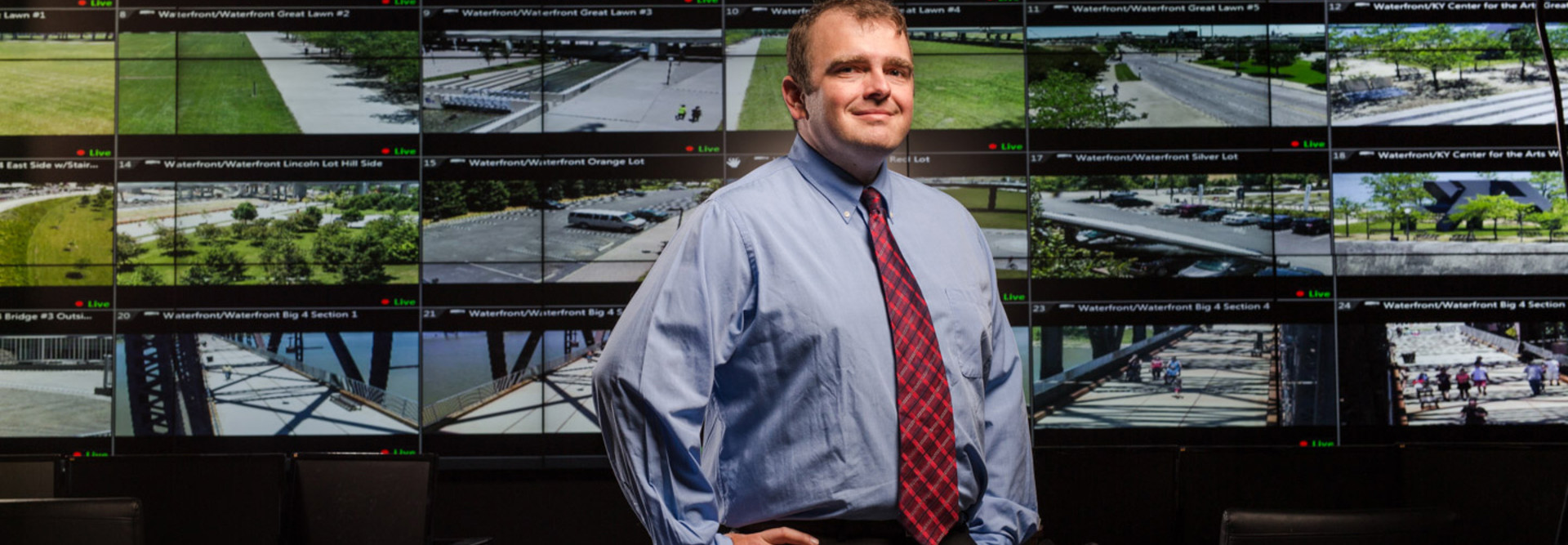Louisville Deploys Cutting-Edge Data Analytics and Video Surveillance Technology
When a group of Louisville, Ky., teens caused a disturbance in downtown two years ago, the city’s mayor wanted to reassure citizens and visitors that the city was safe in time for the forthcoming Thunder over Louisville festival, an event that attracts 650,000 to Louisville’s Waterfront Park.
To beef up security in time for the festival, the city’s IT department had 10 days to install 28 cameras to oversee the 85-acre park and its parking lots. To do so, they had to install 6,000 feet of fiber across the park and another 4,000 feet of fiber across a pedestrian bridge, recalls Chris Seidt, Louisville’s IT infrastructure and operations manager.
“We had to extend fiber end to end throughout the park to provide video feeds to the police department,” he says.
The IT staff, with the help of a third-party installer, worked 16- to 20-hour days to complete the project in time. They deployed Cisco switches, which connected the fiber to the city’s network, and used wireless bridges to extend the network and connect IP cameras to certain areas in the park, Seidt says.
Video Analytics Can Benefit Public Safety
Louisville’s Real Time Crime Center hopes to invest in video analytics tools that will help the police department glean actionable intelligence much faster than before, says Jennifer Corum, director of the RTCC at the Louisville Metro Police Department.
For example, the technology can scan for suspicious behavior, such as packages that are left in public areas. And if police are looking for a suspect in a red car, it can quickly scan video footage and show all red cars captured on video, she says.
“The analytics software can streamline analysis and free up our analysts’ time,” she says.
Corum is also working out the logistics that will allow the police department to access the camera video feeds from local businesses and organizations. “It will expand our visibility,” she says.
Big Data to the Rescue
While the Louisville Metro Police Department’s Real Time Crime Center focuses on providing officers with real-time tactical support, the department’s Crime Information Center (CIC) concentrates on analyzing crime data and spotting trends and patterns.
Those reports allow police to better deploy resources and develop new strategies to prevent crime, says Lt. Col. Robert Schroeder, who also serves as an assistant police chief in the department.
Launched in 2012 and staffed by detectives and civilian analysts, the CIC uses a variety of applications, including mapping technology and an internal records management system. The unit has also started deploying predictive analytics software, which will allow analysis of older crime data to predict areas likely to see crime spikes in the future, Schroeder says.
“If we do predict a crime spike during certain hours in a specific neighborhood, we can send extra patrols over to mitigate it,” he says.









